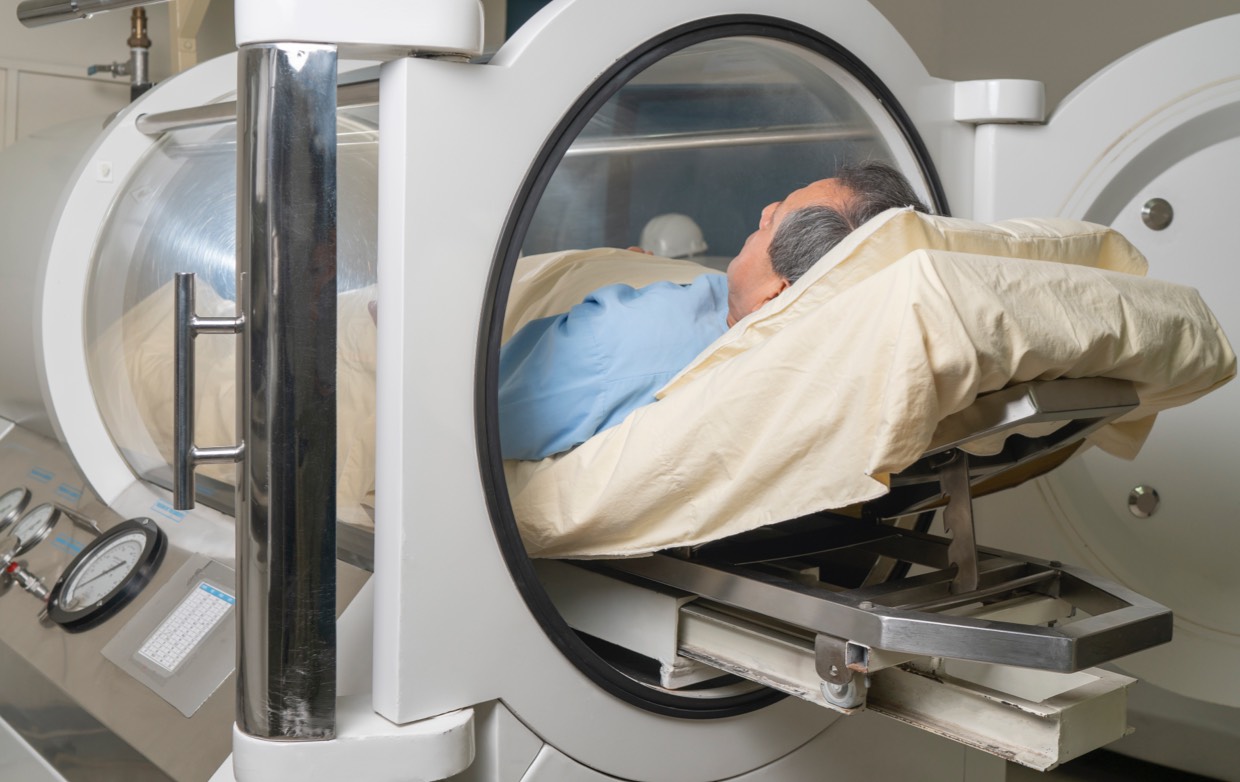Looking for a way to accelerate your body’s healing process without resorting to medication or surgery? Look no further than hyperbaric oxygen therapy.
This increasingly popular form of treatment involves breathing in pure oxygen at high pressure, and it’s been shown to be effective for a wide range of health conditions, from wounds that won’t heal to brain injuries.
In this article, you’ll learn all about hyperbaric oxygen therapy and how it works. You’ll discover the science behind this innovative treatment approach, as well as the many different conditions that can benefit from it.
And if you’re considering trying hyperbaric oxygen therapy for yourself, we’ll walk you through what to expect during a session so you can feel confident and prepared.
So let’s get started on unleashing the healing power of hyperbaric oxygen therapy in your vicinity!
The Science Behind Hyperbaric Oxygen Therapy
You’re probably wondering how exactly hyperbaric oxygen therapy works. Well, let’s start with the oxygenation process.
Hyperbaric oxygen therapy involves breathing pure oxygen in a pressurized chamber, which allows your lungs to take in much more oxygen than they would under normal conditions. This increased level of oxygen then travels throughout your body, helping to heal damaged tissues and fight off infections.
Medical research has shown that this increase in oxygen levels can have a range of benefits for the body. For example, it can help to reduce inflammation, stimulate the growth of new blood vessels, and promote the release of stem cells that aid in tissue repair.
In addition, the high-pressure environment of the hyperbaric chamber can also help to kill certain bacteria and viruses that thrive in low-oxygen environments.
Overall, by boosting your body’s natural healing processes through increased levels of oxygen, hyperbaric oxygen therapy may be able to help you recover from a range of injuries or illnesses more quickly and effectively than other treatments.
Conditions that Can Benefit from Hyperbaric Oxygen Therapy
The section focuses on various medical conditions that may benefit from the application of hyperbaric oxygen therapy. Here are some examples:
1. Wound Healing: Hyperbaric oxygen therapy can help stimulate and speed up wound healing, particularly for non-healing wounds caused by diabetes or radiation damage.
2. Autism Treatment: Some studies suggest that hyperbaric oxygen therapy can improve symptoms of autism spectrum disorder by reducing inflammation and oxidative stress in the brain.
3. Carbon Monoxide Poisoning: Hyperbaric oxygen therapy can quickly reduce the effects of carbon monoxide poisoning by increasing the amount of oxygen available to the body’s tissues.
4. Radiation Therapy Side Effects: Patients undergoing radiation treatment for cancer may experience side effects like tissue damage, pain, or swelling. Hyperbaric oxygen therapy can ease these symptoms and promote healing.
While hyperbaric oxygen therapy is not a cure-all for every condition, it has been shown to provide significant benefits in many cases. If you suffer from any of these conditions or others that could potentially benefit from this type of treatment, speak with your healthcare provider about whether hyperbaric oxygen therapy might be right for you.
The Benefits of Hyperbaric Oxygen Therapy
Exploring the advantages of HBOT can reveal unexpected ways to enhance overall health and wellness. One of the most significant benefits of hyperbaric oxygen therapy is its ability to increase oxygen levels in the body. When you breathe in pure oxygen at high pressure, it dissolves into your blood plasma, allowing for an increase in oxygen-rich blood flow throughout your body. This process delivers much-needed nutrients and oxygen to damaged tissues and organs, promoting cellular rejuvenation and aiding in healing.
Furthermore, HBOT has been shown to have anti-inflammatory effects on the body. By reducing inflammation, this therapy has been used successfully for conditions such as arthritis, sports injuries, and even chronic pain. Additionally, studies have shown that hyperbaric oxygen therapy may improve brain function by increasing blood flow and delivering more oxygen to the brain cells.
Overall, incorporating hyperbaric oxygen therapy into your wellness routine can provide numerous benefits for both physical and mental health.
What to Expect During a Hyperbaric Oxygen Therapy Session
Get ready to immerse yourself in a unique healing experience that can boost your physical and mental well-being by learning what happens during a hyperbaric oxygen therapy session.
First, you’ll be asked to change into comfortable clothing before entering the oxygen chamber. Once inside, the pressure will gradually increase as the chamber is filled with pure oxygen. You may feel a slight popping sensation in your ears as the pressure changes, but this is completely normal.
During the session, it’s important to relax and breathe normally. Some people choose to listen to music or practice relaxation techniques like deep breathing or meditation to help them stay calm and comfortable.
The length of each session varies depending on your individual needs, but typically lasts between 60-90 minutes. Afterward, you may feel refreshed and energized as the extra oxygen has helped promote healing and cell regeneration throughout your body.
Conclusion
Now that you know all about hyperbaric oxygen therapy, it’s time to decide if it’s right for you. The science behind HBOT is sound and the benefits are numerous. However, the cost and time commitment may not be feasible for everyone.
If you suffer from a condition that could benefit from HBOT, such as chronic pain or traumatic brain injury, it may be worth exploring this treatment option further. But if your condition does not fall within the range of conditions that can be treated with HBOT or if you simply cannot afford the therapy, there are still plenty of other treatments available to help manage your symptoms.
Ultimately, whether or not to try hyperbaric oxygen therapy is a personal decision that should be made in consultation with your doctor. With careful consideration and expert guidance, you can make an informed choice about what course of treatment is best for you and start feeling better soon!




